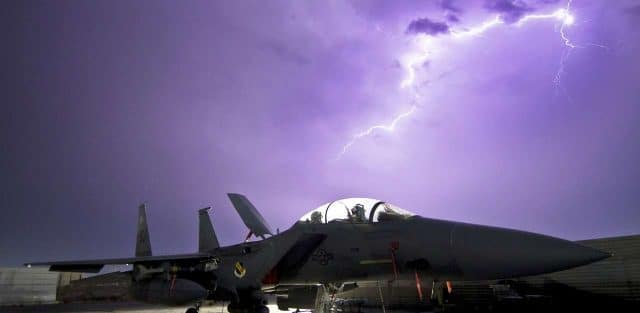Microburst

Microbursts occur during powerful thunderstorms and present themselves as a small downdraft that moves in a way similar to a tornado, just in reverse. When microbursts are present, air charter safety becomes top priority. This means the safety and wellbeing of the passengers and crew come first.
Finding Safety During a Microburst
Since microbursts create strong wind gusts on the surface of the Earth, landing when a microburst is present becomes a challenge. To adhere to air charter safety guidelines, pilots receive extensive training on how to recover from a microburst.
The Big Power of Microbursts
There are two types of microbursts that occur during a thunderstorm: Wet – Wet microbursts are just how they sound – wet. When a downburst occurs with significant precipitation at the surface, a wet microburst occurs. Melting hail appears to play a big role in the formation of these wet weather wonders. Dry – When rain mixes with dry air and evaporates, cool air forms. The cool air quickly descends, forming a dry microburst. These are created when a high based thunderstorm generates little to no surface rainfall. These two types go through three stages during a cycle: Downburst – The wind moves at its highest rate of speed during this cycle. A column of air descends from the cloud base and touches down within minutes. Outburst – The air that comes into contact with the ground curls outwards and starts moving away from the original site of impact. Cushion – Once the wind hits the ground, it slows down due to friction. However, the curling wind increases in speed.
Microbursts occur during powerful thunderstorms and present themselves as a small downdraft that moves in a way similar to a tornado, just in reverse. When microbursts are present, air charter safety becomes top priority. This means the safety and wellbeing of the passengers and crew come first.
Finding Safety During a Microburst
Since microbursts create strong wind gusts on the surface of the Earth, landing when a microburst is present becomes a challenge. To adhere to air charter safety guidelines, pilots receive extensive training on how to recover from a microburst.
The Big Power of Microbursts
There are two types of microbursts that occur during a thunderstorm: Wet – Wet microbursts are just how they sound – wet. When a downburst occurs with significant precipitation at the surface, a wet microburst occurs. Melting hail appears to play a big role in the formation of these wet weather wonders. Dry – When rain mixes with dry air and evaporates, cool air forms. The cool air quickly descends, forming a dry microburst. These are created when a high based thunderstorm generates little to no surface rainfall. These two types go through three stages during a cycle: Downburst – The wind moves at its highest rate of speed during this cycle. A column of air descends from the cloud base and touches down within minutes. Outburst – The air that comes into contact with the ground curls outwards and starts moving away from the original site of impact. Cushion – Once the wind hits the ground, it slows down due to friction. However, the curling wind increases in speed.








